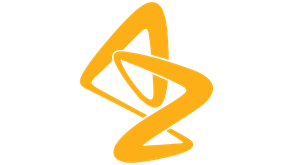Engineering Physics
Bachelor of Science
Introduction
Engineer your future.
The study of physics explores how matter moves through space and time, from molecules to galaxies. Engineering focuses on finding practical solutions to real-world problems, big and small. Together, these areas of study give you a better understanding of how (and why) things work.
The Engineering Physics major at John Carroll University combines the tangible and theoretical, preparing you for high-demand careers in both growing and emerging industries such as biotechnology, sustainable energy, aerospace, civil engineering, materials science, and medical physics.
At JCU, you will develop far more than technical knowledge and proficiency. Rooted in the Jesuit liberal arts tradition, our program will also give you the communication, collaboration, and ethical decision-making skills needed to thrive in today’s engineering landscape.
Project-Based Learning
Experiment and discover in modern lab facilities. Embark on an engineering design project. Our program is hands-on by nature, and you’ll get plenty of practical experience.
Immersive Internships
Gain engineering experience in the real-world. The Cleveland area is home to hundreds of innovative companies where you can put learning into practice—and make important career connections.
Student Involvement
Go stargazing or visit NASA with Society of Physics Students. Join the Engineering Club or other STEM-focused groups on campus.
Undergraduate Research
Pursue a summer research program. Assist a faculty member with their scholarly work. Present on campus at DISCOVER or at an academic conference.
Academics
Program Overview & Outcomes
As an engineering physics major at John Carroll, you will take a mix of physics, engineering, math, and chemistry courses. Through this blend of theory and lab classes, including exciting project-based courses, you will learn to:
- Identify, formulate, and solve complex engineering problems by applying principles of science, engineering, and mathematics
- Apply engineering design to produce solutions for a variety of issues
- Communicate complex and scientific ideas to a variety of audiences
- Exhibit ethical and professional awareness
Curriculum: What You Will Learn
You'll develop strong analytical and problem-solving skills through a rigorous curriculum combining physics principles with engineering applications. The program emphasizes hands-on laboratory experience and prepares you for careers in research, development, and various engineering fields.
Related Programs
Still deciding on your program of study at JCU or considering a second major? Here are some other academic areas to explore.
Complementary Minors
Develop even more specialized skills and knowledge with a minor. The engineering physics major pairs well with areas such as:
Careers
Where Our Alumni Go
Our alumni pursue engineering careers in a variety of industries, from electrical and aerospace to biomedical and mechanical. Many continue on to graduate programs in physics, engineering, and related fields.







